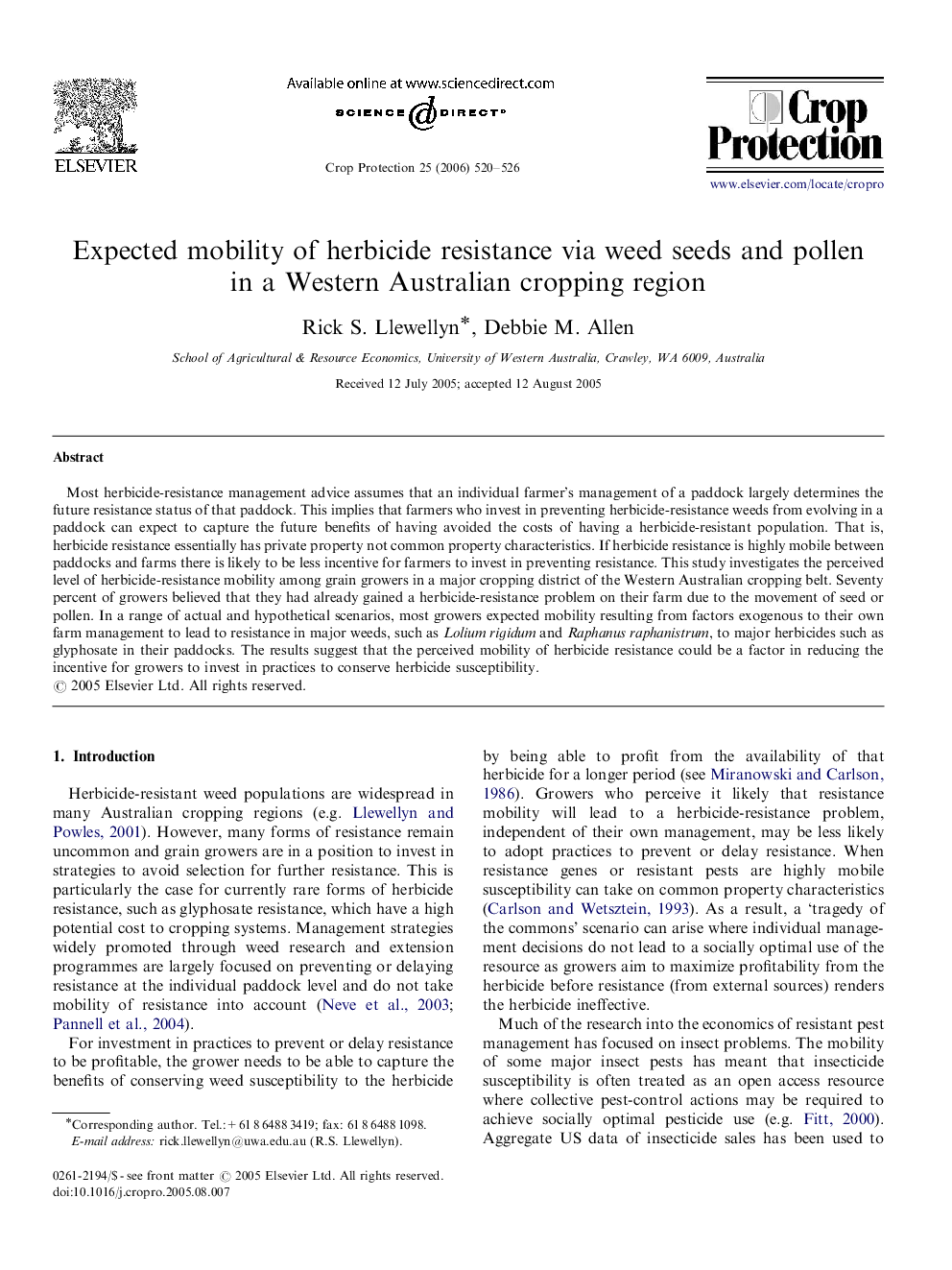| Article ID | Journal | Published Year | Pages | File Type |
|---|---|---|---|---|
| 4508099 | Crop Protection | 2006 | 7 Pages |
Most herbicide-resistance management advice assumes that an individual farmer's management of a paddock largely determines the future resistance status of that paddock. This implies that farmers who invest in preventing herbicide-resistance weeds from evolving in a paddock can expect to capture the future benefits of having avoided the costs of having a herbicide-resistant population. That is, herbicide resistance essentially has private property not common property characteristics. If herbicide resistance is highly mobile between paddocks and farms there is likely to be less incentive for farmers to invest in preventing resistance. This study investigates the perceived level of herbicide-resistance mobility among grain growers in a major cropping district of the Western Australian cropping belt. Seventy percent of growers believed that they had already gained a herbicide-resistance problem on their farm due to the movement of seed or pollen. In a range of actual and hypothetical scenarios, most growers expected mobility resulting from factors exogenous to their own farm management to lead to resistance in major weeds, such as Lolium rigidum and Raphanus raphanistrum, to major herbicides such as glyphosate in their paddocks. The results suggest that the perceived mobility of herbicide resistance could be a factor in reducing the incentive for growers to invest in practices to conserve herbicide susceptibility.
